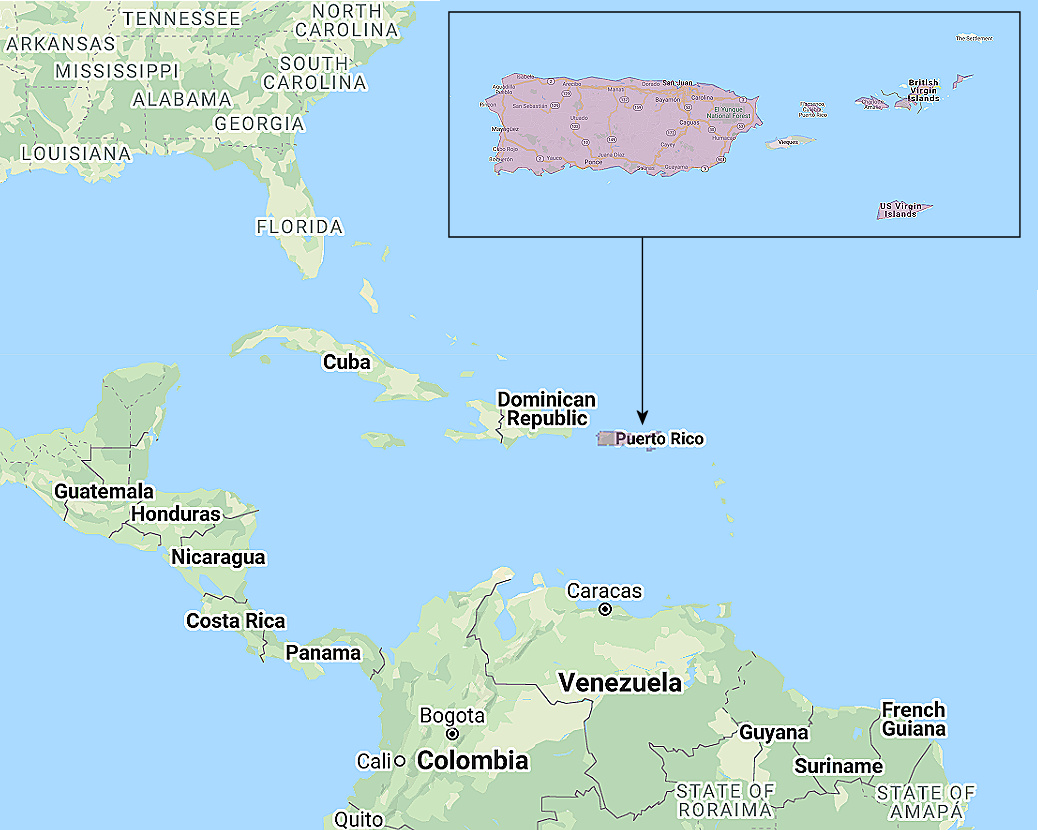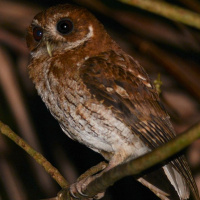Introduction
The Puerto Rican Screech Owl is a small owl with no ear-tufts. A greyish-brown and rufescent morph are known to exist. It is sometimes known as the Cuckoo Bird in the Virgin Islands. The International Ornithological Congress list this bird in its own genus Gymnasio and call it the Puerto Rican Owl.
Photo Gallery (1 picture)
Sound Gallery
Information
Description: The facial disk is indistinct, the eyes are brownish and the beak greenish-yellow. The eyebrows are lighter than the
rest of their face.
Upper parts are spotted, slightly barred and streaked darker. Underparts are lighter than upper parts, becoming whiter towards the belly -
individual feathers having dark shaft-streaks and cross-bars. The upper breast has many wavy, brown markings.
Flight and tail feathers are barred dark and light. Only the upper part of the legs is feathered.
Size: Length 20-23cm. Wing Length 154-171mm. Weight 103-154g.
Habits: A nocturnal bird, hiding in dense foliage, thickets or caves during the day. Calls in the early morning and evening.
Voice: The male's main call is a short guttural quavering trill of 3-5 seconds duration. He also has another shorter trill which begins softly and rises in pitch and volume to a maximum and quickly fades away. The female's call is similar, but higher in pitch. The contact call is believed to be a soft, cackling gu-gu. They also make a loud coo-coo call, which is how it gets the name of "Cuckoo Bird" in the Virgin Islands.
Hunting & Food: These owls eat mainly insects and occasionally small mammals.
Breeding: Breeding season is believed to be April to June. They generally nest in tree hollows and cliff crevices. The female lays 2-3 white eggs, and is fed by her mate as she incubates them.
Habitat: Dense Woodland, thickets and caves.
Distribution: Puerto Rico, Isla de Vieques, Isla de Culebra, and adjacent Virgin Islands.

Range of the Puerto Rican Screech Owl Megascops nudipes
Status: Common on Puerto Rico, critically endangered on the Virgin Islands.
Original Description: Daudin, Francois Marie. 1800. Traité élémentaire et complet d'Ornithologie, ou Histoire Naturelle des Oiseaux, 2, p. 199.



